Marsh Botanical Gardens Greenhouses
Not Just Marsh Plants
New Haven (Google Maps location)
August 4, 2010
[Note: This page is an identical copy to the one originally written for my museums list.]
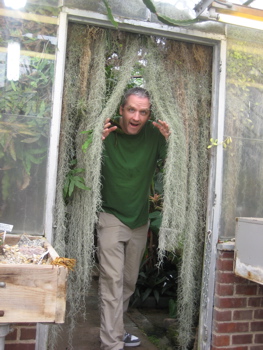 I went to a lot of places on August 4, 2010. It was my one day per year I purposely take off from work in order to visit as many weekday-only joints and I was on the go all day. I went to a few places you wouldn’t necessarily call museums, but I am allowed to take liberties. And speaking of liberties, I’ll be taking the liberty of incorporating some of the Gardens’ website descriptions for this page. Here’s that website.
I went to a lot of places on August 4, 2010. It was my one day per year I purposely take off from work in order to visit as many weekday-only joints and I was on the go all day. I went to a few places you wouldn’t necessarily call museums, but I am allowed to take liberties. And speaking of liberties, I’ll be taking the liberty of incorporating some of the Gardens’ website descriptions for this page. Here’s that website.
Marsh Botanical Gardens is one such place. I set some precedent (with myself) a couple years ago by including the UConn Greenhouses (CTMQ Visit here), so of course I have to include the ones at Yale. And while I think the UConn experience was a little bit cooler with more to see and more organization, the Yale greenhouses have more history tied to them.
The bottom line is that BOTH are definitely worth visiting. They are free, open to the public, run by unfailingly nice folks and of course are beautiful and interesting. And heck, if it’s cold outside, they are nice and warm too. These aren’t like your neighborhood nursery greenhouses; they have rows upon rows of rare and kooky plants you’re not likely to see anywhere else in Connecticut.
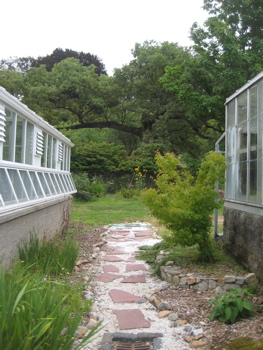 Marsh Gardens sits on eight acres at the northern end of Yale University’s campus. Bequeathed to the University by Othniel C. Marsh (1832-1899), paleontologist and natural history professor, the Gardens have provided support for research and instruction for Yale’s undergraduate and graduate studies programs, including Forestry and Environmental Studies; Evolutionary and Ecological Biology (Hey, that was me!); Molecular, Cellular and Developmental Biology and others.
Marsh Gardens sits on eight acres at the northern end of Yale University’s campus. Bequeathed to the University by Othniel C. Marsh (1832-1899), paleontologist and natural history professor, the Gardens have provided support for research and instruction for Yale’s undergraduate and graduate studies programs, including Forestry and Environmental Studies; Evolutionary and Ecological Biology (Hey, that was me!); Molecular, Cellular and Developmental Biology and others.
Othniel Marsh was a fascinating guy. You can catch up on him here, on my page about his house being a National Historic Landmark. Actually, these gardens are part of the Landmark designation. Marsh was one of the preeminent scientists in the field of paleontology; the discovery or description of dozens of news species and theories on the origins of birds are among his legacies.
After graduating from Yale College in 1860 he traveled the world studying anatomy, mineralogy and geology. He obtained a teaching position at Yale upon his return. From the 1870s to 1890s he competed with rival paleontologist Edward Drinker Cope in a period of frenzied Western American prospecting now known as the Bone Wars. (You should read up on the Bone Wars.)
 Marsh’s fight with Cope was stupid, but his contribution to natural history was amazing. He also convinced his rich Uncle Peabody to build the Peabody Museum, which houses most of his vast collection. Pretty cool, huh? And now here we are, down the hill (“Science Hill”) from his house in the greenhouses.
Marsh’s fight with Cope was stupid, but his contribution to natural history was amazing. He also convinced his rich Uncle Peabody to build the Peabody Museum, which houses most of his vast collection. Pretty cool, huh? And now here we are, down the hill (“Science Hill”) from his house in the greenhouses.
The outdoor landscaping has gone to pot over the years, but Yale is trying to recoup it to a large degree. During the first two decades, the oversight of the botanic garden was in the capable hands of Dean of Forestry Henry Graves and the gardener, John Murray. Systematically planted beds with labels provided study material for forestry students and others.
In 1923, Yale acknowledged Marsh’s generosity by adding his name to the garden. Also, the School of Forestry moved to Sage Hall and the oversight of the Garden was given to the Botany Department. That same year, a plan for the reorganization of the garden was presented, which stated that the goal should be that ‘the Botanic Garden will be an institute for research in plant life also containing a systematic display of plants as an educational feature for students and the general public.’
1923 continued as a pivotal year for the garden, as Beatrix Farrand began her decades-long relationship with Yale that year. Her design was implemented over several years, and included a formal garden, patterned after the earliest existing formal 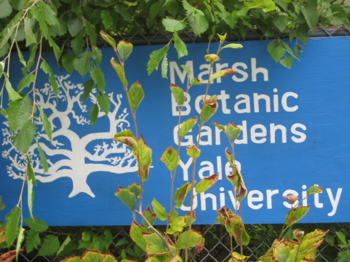 garden, in Padua, Italy. Her design also included a rock garden, which is the last and best remnant of her work at Marsh. Although it has changed significantly over the years, the special charm of this setting still has power to engage the visitor.
garden, in Padua, Italy. Her design also included a rock garden, which is the last and best remnant of her work at Marsh. Although it has changed significantly over the years, the special charm of this setting still has power to engage the visitor.
After Ms. Farrand’s tenure of oversight and design of the campus ended in the early 1940’s, the garden went through a period of neglect and encroachment. Late in the 1990’s, Mary Helen Goldsmith, a professor for Molecular, Cellular and Developmental Biology, began a restoration of the garden that included the first stages of planting hillsides, labeling specimens and general renovation of areas of the garden. The display areas also include naturalistic plantings on the hillsides using American native wildflowers, grasses and woody plants. The perennial and annual beds near the greenhouses provide spring, summer and fall color.
I didn’t spend much time in the outside garden areat at all. I certainly appreciate Beatrix Farrand and know of her efforts around the state, but the really cool stuff is inside here. Even they say that: “The indoor diversity collections are the strongest part of our public display, with tropical plants of economic and cultural significance filling every space in several large greenhouses. The insectivorous collection, the desert plant collection and the coffee, chocolate and banana trees elicit positive reactions from visitors.”
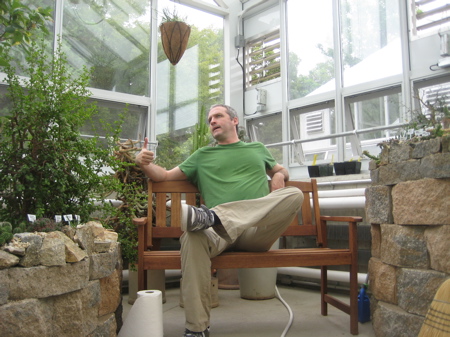
Long day of CTMQ’ing, my friends.
Yes. Yes they do. Just look at the stupid joy on my face in the pictures in which I appear. Upon arrival, I happened upon a worker there who seemed very excited to have a random visitor. He eagerly unlocked every door for me and nearly tripped over himself to show off some of his prized plants. I’m not making fun of him at all – I loved the enthusiasm. It’s infectious. He even left me a little love note under my windshield wipers before I was through…
 For him, it was the coffee and chocolate and banana plants that did it. For me, it was the insectivorous plants, bamboo and something called the “living stones.” But I’m getting slightly ahead of myself.
For him, it was the coffee and chocolate and banana plants that did it. For me, it was the insectivorous plants, bamboo and something called the “living stones.” But I’m getting slightly ahead of myself.
The first greenhouse was slightly boring. Here, it appeared to me, was where the students were conducting studies on various monocots – grasses, corn, bamboo. And yet, I love bamboo. I got into a lengthy bamboo discussion with the guy and about how I’d love to grow a controlled bamboo screen along the creek in my backyard and, and, and… He was clearly bored with MY excitement about bamboo. A non-native and often invasive species.
Dude just wanted to show me some cocoa nibs and bananas.
Which is exactly what he did. It is undeniably cool to see bananas growing in New Haven, Connecticut. In fact, it’s bananas. I was certainly impressed with the cacao tree which was flowering. Oh what, you think I’m just being Yale elitist by writing cacao instead of cocoa? Pshaw.
Technically speaking, the plant is called a “cacao tree” and the seeds and the chocolate powder made from them are called “cocoa.” These spellings are often swapped, but in contexts where botanical names matter, it’s better to stick with “cacao tree.” Neither of these should be confused with “coca,” the source of cocaine. Source
My five-minute tour was done and I was left alone. Just the ol’ Boojum Tree and me.
What the heck is a boojum tree? Well, for one, boojums are related to Ocotillos. All set? No? Okay, The Boojum tree (Fouquieria columnaris) is one of the most bizarre-appearing plants in the world. Shaped like snakey naked candles or spiny upside down carrots, they never fail to interest observers. Boojums are native to the Sonoran Desert on the west coast of Baja California, and one small area on the Sonora mainland near Puerto Libertad.
Read more about them here. They sell for a thousand bucks each and are illegal to have in the US unless they were nursery grown. Boojum on that!
There were a bunch of orchids and the cactus collection was most impressive. In a way, you think to yourself, cacti must be the easiest thing to grow! It’s not like they need watering, right? I have no idea, but I suspect that’s right. Anyway, when grown properly and presented in a cool way, I really like them.
Lastly, check these things out:
These are the aizoaceae. I won’t bore you with the details, but the Marsh collection focuses on the species that look like stones. They are succulents and are endemic to Africa, but most importantly, I think they are just flat out cool.
I hung around the greenhouses for a while. I think there were 4 that I spent time in, perusing the plants and actually trying to learn a thing or two. Maybe it’s just me, but I really like greenhouses.
And I really like greenhouse workers. The guy I spoke with earlier who had disappeared into the warm mist? He left me this out on my car:
The URL of where I can find any kind of bamboo I could ever want shipped to my humble abode. I have more pictures than words this time, so enjoy a few more shots:
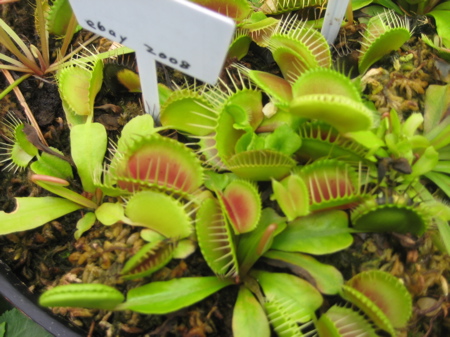
Oooh, Venus Flytrap! I’m the jerk who can’t resist doing…
Back to Arboreta, Gardens & Greenhouses, Labyrinths, Trees & Plants
…………………………………………………….
Cost: Free!
Hours: Normal school business hours pretty much (email ahead)
Food & Drink? ‘Bout time I recommend Caseus
Children? Yes
You’ll like it if: You breathe the O2 these things give us
You won’t like it if: You slip and fall onto the cacti?
Freebies: Piece of paper with a URL on it
For the Curious:
Marsh Botanic Gardens
Othniel Marsh
Better picture of cacao flowers
Beatrix Farrand
Bamboo Sourcery
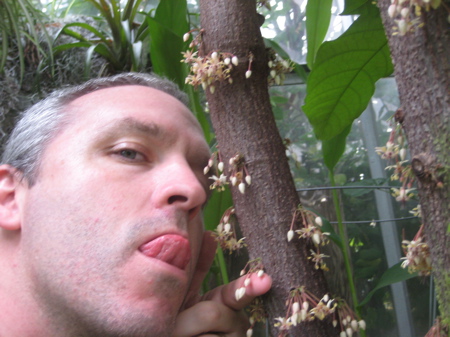


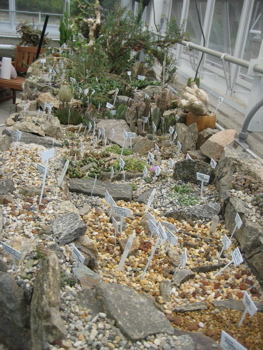
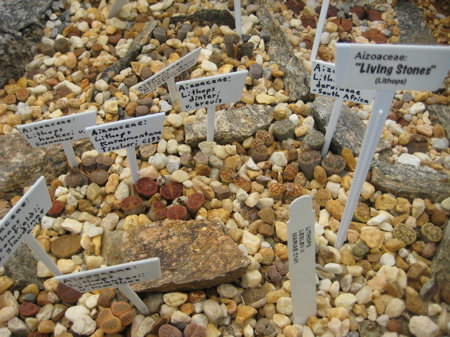
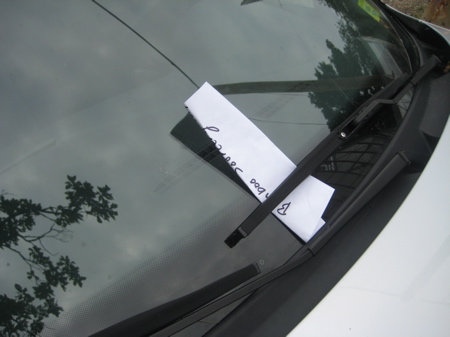
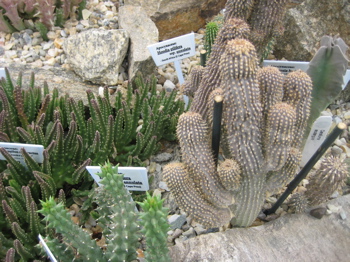
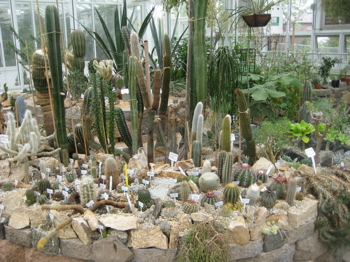
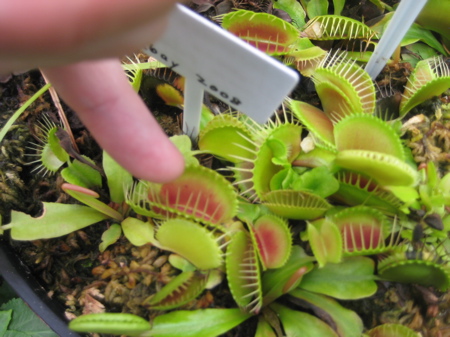
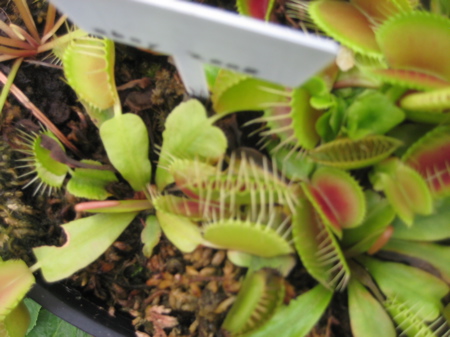
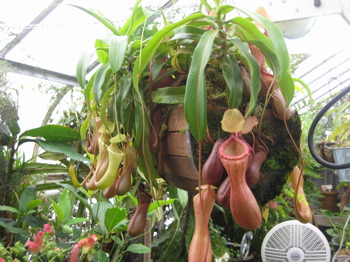






It’s a small clientelle if you are required to breathe co2.Also plants take in co2 and give off oxegen (o2)
Comment #1 on 04.13.12 at 11:21 am